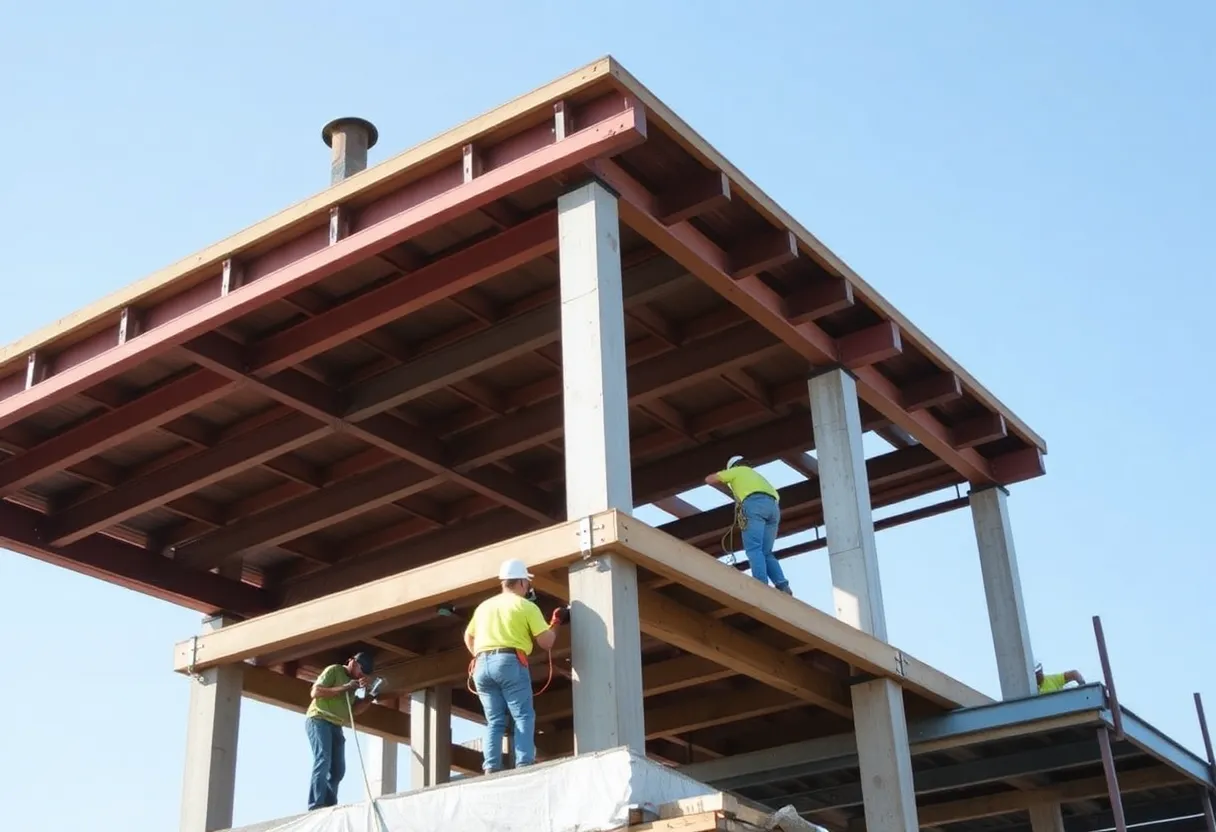Washington, D.C., October 6, 2025
News Summary
A new federal law restores a partial claim option for VA-guaranteed home loans, allowing the VA to cover up to 25% (30% for certain COVID-era missed payments) of unpaid principal to prevent foreclosures. The move aims to help delinquent veterans, but servicers face urgent operational work: system changes, policy updates, staff training and clarification on documentation and compensation. Industry groups urge rapid, streamlined guidance to speed rollout. Lenders are also repositioning toward VA and renovation lending as part of broader product diversification and technology-driven borrower support.
VA Home Loan Program Reform Act Enacted; Partial Claim Restored as Industry Scrambles to Implement
Key point: A new federal law restoring a partial claim option for VA-guaranteed home loans was signed in late July, creating an urgent operational task for loan servicers as lenders reposition toward VA and renovation lending products. The measure lets the Department of Veterans Affairs purchase a portion of a delinquent or at-risk loan and record a non-interest-bearing secured interest behind the original VA-guaranteed first lien to prevent or resolve defaults.
What the law does and who it helps
The legislation allows a partial claim of up to 25% of the unpaid principal balance on the date the claim is made. For borrowers who missed payments between March 1, 2020 and May 1, 2025, the limit increases to 30% of the unpaid principal balance for that initial partial claim. The program generally permits one partial claim per loan, with an extra allowance when a missed payment occurred during a presidentially declared major disaster. The partial claim does not reduce the VA guarantee on the loan.
Why timing matters
Industry leaders and servicers warn that many struggling borrowers may not get relief unless the VA implements the program quickly and with flexible guidance. Tens of thousands of VA borrowers are delinquent: before the program wound down, a recent count showed more than 73,000 VA borrowers 30 or more days delinquent, including roughly 40,000 more than 90 days overdue. Broader counts show more than 43,000 veterans now six months or longer delinquent. Foreclosures on VA loans have also spiked sharply year over year, raising the stakes for rapid action.
Operational challenges and recommended rollout
Servicers will need system changes, updated policies, and training for call centers and loss mitigation teams. Some vendors estimate software adjustments could be done in roughly 60 days, while servicer-wide policy and staffing updates will likely take several months. Industry advisers recommend a rollout via informal guidance and streamlined documentation rather than extended formal rulemaking. Additional suggestions include compensating servicers for administrative costs and clarifying whether a partial claim counts as a one-time use across servicers, since no centralized database exists to track prior partial claims.
Backstory: what was replaced and why
The restored partial claim fills a gap left when the prior partial claim program expired and when a separate Veterans Affairs Servicing Purchase program wound down. The earlier purchase program had allowed the VA to buy loans and reissue them at low rates but was criticized for design and cost issues and was suspended, leaving servicers to carry many delinquent accounts. The new partial claim is designed to bring the VA approach closer to loss-mitigation tools used by other federal entities.
Industry reaction and near-term priorities
Trade groups and mortgage industry stakeholders praised congressional passage as a step toward protecting veterans at risk of foreclosure and urged rapid implementation. At the same time, servicers stressed the need to avoid burdensome red tape. Technology vendors say the technical hurdles are surmountable, but process, training, and communication must be prioritized so borrowers can access relief without long delays.
Market context: lenders shifting products and strategy
The mortgage market looks very different than it did five years ago. Lenders can no longer effectively steer everyone into a single product. The post-2008 era that relied heavily on a narrow set of workhorse mortgages is giving way to diversified product portfolios and advisory relationships with borrowers. Two categories gaining traction are VA mortgages and renovation loans. VA lending is moving from niche to a strategic channel because of large numbers of military-affiliated borrowers and attractive features like no required down payment for fully entitled borrowers, often competitive rates, more lenient credit score considerations, and no private mortgage insurance requirement.
Renovation loans are rising in appeal amid constrained housing inventory and high construction costs. These products let buyers purchase homes and include immediate renovation budgets in the mortgage or allow homeowners to refinance and finance significant property improvements. Lenders that build flexible renovation options and clear borrower education are positioning themselves to capture demand.
The role of technology and the path forward
Experts point to personalization powered by artificial intelligence, machine learning, and advanced analytics as the future of mortgage lending. Lenders that combine adaptable product design, data-driven borrower insights, transparent education, and a smooth digital experience will stand out. With refinancing activity muted while interest rates are elevated, many lenders are also designing innovative products now to be ready for a likely refinance wave when rates fall.
What to watch next
- Rulemaking vs. guidance: whether the VA issues informal implementation guidance or proceeds with a full formal rulemaking process.
- Servicer readiness: timelines for system updates, staff training, and process changes.
- Borrower outcomes: whether the program prevents foreclosures at meaningful scale and how servicer compensation and documentation requirements affect speed of relief.
- Market shifts: the extent to which lenders expand VA and renovation products and use data-driven loan design to meet borrower needs.
FAQ
What is a VA partial claim?
A VA partial claim is a loss-mitigation tool that allows the VA to pay a portion of a delinquent or at-risk borrower’s loan balance and hold a non-interest-bearing secured interest subordinate to the first lien, helping the borrower avoid foreclosure.
How much can the VA defer under a partial claim?
The law permits deferring up to 25% of the unpaid principal balance on the date the partial claim is made. For borrowers who missed payments during the March 1, 2020–May 1, 2025 window, the initial limit can be 30%.
How many partial claims can a borrower receive?
Generally one partial claim is allowed per loan. An additional partial claim is possible if the borrower missed payments during a presidentially declared major disaster. Rules and tracking mechanisms are still being clarified.
When will the program begin helping borrowers?
The VA must issue implementation guidance and servicers must update systems and train staff. Vendors estimate some software updates can be done in a matter of weeks, but full servicer readiness may take months. Rapid, streamlined guidance would speed rollout.
How does this affect servicers and lenders?
Servicers must update policies, procedures, and technology, and will need clear compensation rules for administrative costs. Lenders may also reframe product lines to include more VA and renovation options as part of a diversified strategy.
Where should veterans seeking help look first?
Borrowers should contact their loan servicer and their local VA loan-servicing center for specific guidance. Counseling and housing stability resources may also be available through veteran support networks and housing counselors approved by federal programs.
Key Features at a Glance
| Feature | What it does | Why it matters |
|---|---|---|
| Partial claim limit | Defers up to 25% of unpaid principal (30% for certain COVID-era missed payments) | Provides meaningful mortgage relief without altering the VA guarantee |
| One-time use | Generally one partial claim per loan; exception for major disasters | Targets relief while limiting repeated use unless disaster conditions apply |
| Servicer actions | Systems updates, policy changes, staff training, documentation processes | Operational readiness determines how quickly borrowers receive help |
| Renovation loans | Finance purchase or refinance plus renovation costs in one mortgage | Helps buyers and homeowners cope with low inventory and high construction costs |
| VA loan advantages | No down payment for fully entitled borrowers; no PMI; flexible credit considerations | Makes homeownership more accessible for military-affiliated borrowers |
| Delinquency backdrop | Tens of thousands of VA borrowers delinquent; foreclosures up markedly year over year | Elevates urgency for effective loss-mitigation tools |
| Implementation preference | Industry recommends informal guidance, streamlined documentation, servicer compensation | Can speed program availability and reduce administrative friction for borrowers |
Deeper Dive: News & Info About This Topic
Additional Resources
- Consumer Finance Monitor: Congress Passes Legislation to Help Protect Veterans from Foreclosure
- Wikipedia: VA home loan program
- HousingWire: VA mortgage partial claim program uncertainty
- Google Search: VA partial claim program implementation
- CBS News: Government shutdown could affect mortgage loans and flood insurance
- Google Scholar: VA partial claim
- Bankrate: Best VA mortgage lenders
- Encyclopedia Britannica: VA home loan
- Forbes Advisor: Best VA mortgage lenders
- Google News: VA home loan partial claim
Author: Construction FL News
The FLORIDA STAFF WRITER represents the experienced team at constructionflnews.com, your go-to source for actionable local news and information in Florida and beyond. Specializing in "news you can use," we cover essential topics like product reviews for personal and business needs, local business directories, politics, real estate trends, neighborhood insights, and state news affecting the area—with deep expertise drawn from years of dedicated reporting and strong community input, including local press releases and business updates. We deliver top reporting on high-value events such as the Florida Build Expo, major infrastructure projects, and advancements in construction technology showcases. Our coverage extends to key organizations like the Associated Builders and Contractors of Florida and the Florida Home Builders Association, plus leading businesses in construction and legal services that power the local economy such as CMiC Global and Shutts & Bowen LLP. As part of the broader network, including constructioncanews.com, constructionnynews.com, and constructiontxnews.com, we provide comprehensive, credible insights into the dynamic construction landscape across multiple states.





